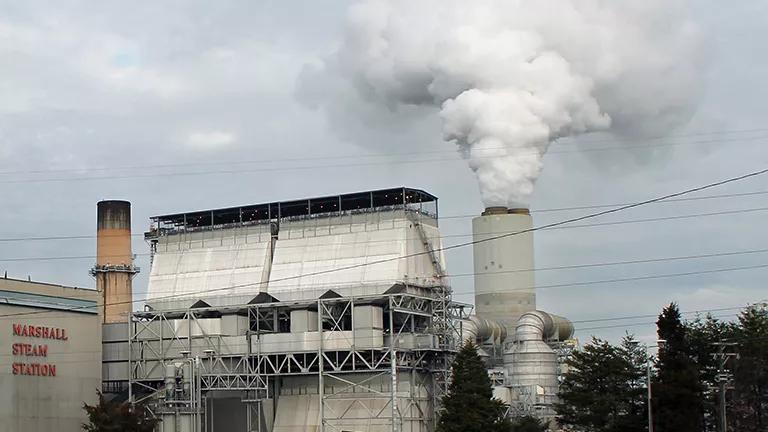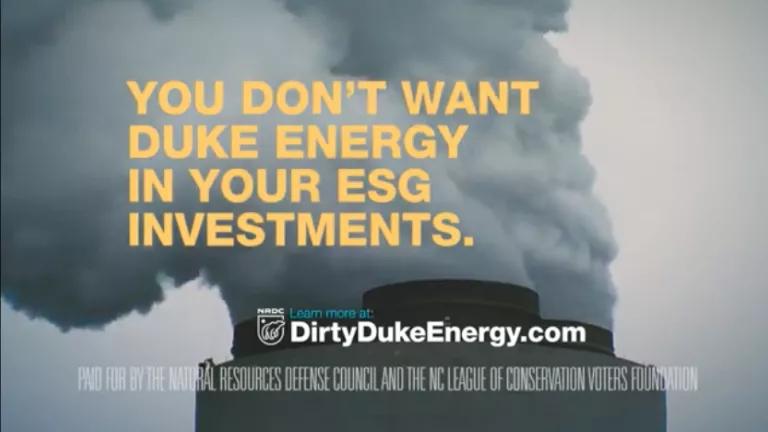North Carolina Must Move to Implement Climate and Clean Energy Solutions
North Carolina concluded its climate and clean energy planning with the release of a long-awaited report, "Power Sector Carbon Reduction: An Evaluation of Policies for North Carolina." Now is the time to implement solutions.

North Carolina concluded its climate and clean energy planning with the release of a long-awaited report titled, Power Sector Carbon Reduction: An Evaluation of Policies for North Carolina. The analysis done of the various policies leaves one thing clear, North Carolina is at a “tipping point” in its electric sector transition where “small changes” lead to significant shifts. The state’s Clean Energy Plan, released in late 2019, recommended an extensive set of policies and top among them was to develop a carbon reduction policy design for accelerated retirement of uneconomic assets and other market-based and clean energy policy options. The recent report, which was over a year in the making, completes the planning phase of North Carolina’s Executive Order 80 to “Address Climate Change and Transition to a Clean Energy Economy.”
The report evaluated four electric sector policies separately and in combination including: accelerated coal retirements, carbon-adders, joining the Regional Greenhouse Gas Initiative and clean energy standards. While the carbon emissions in North Carolina will continue their slow decline, additional policies are needed to achieve ambitious 2030 and 2050 goals. And while each of the policies evaluated would accelerate the transition to clean energy, a combination of these policies is the most effective and efficient path forward.
Now that the planning phase of EO80 has concluded, we and most other stakeholder are anxiously awaiting how we transition to implementation. The likelihood is that the various policies are implemented across multiple fronts. First, the North Carolina Department of Environmental Quality is considering a petition to regulate electric sector greenhouse gases by joining RGGI. Environmental agencies have not only the ability but a duty to regulate air pollutants. A second discussion is occurring in front of the North Carolina Utilities Commission (NCUC). Currently Duke Energy Carolinas and Duke Energy Progress have an open docket to get approval for their 15-year plans for the electric sector. Back in 2018, the NCUC asked the utility to account for the uneconomic coal generation they were operating and show how they would meet the goals of Executive Order 80 (70% reductions in carbon dioxide from the electric sector by 2030). And finally, the NC legislature certainly has an opportunity to weigh in and although consensus has been difficult to achieve there, a quiet conversation has begun although not all stakeholders are allowed at the table.
North Carolina has already seen its much more than its share of billion dollar disasters as climate change continues to accelerate. But addressing the climate crisis also represents the greatest opportunity to advance our economy. North Carolina was home to more than 113,000 clean energy jobs by the end of 2019 and ranked in the top 10 across all states. Ultimately, when these policies are done correctly, they can yield considerable benefits to our health. RGGI helped participating states save between $191 and $350 million dollars in avoided health related costs. But the same policy helped generate investments that will deliver over $2 billion dollars in energy bill savings.
As we’ve seen from the report, a combination of electric sector carbon policies is the best path forward. The results of the report are consistent with our experience in other states where a combination of ‘push’ and ‘pull’ policies supercharges the clean energy transition and does it at very low costs and generating a boom in clean energy jobs while achieving substantial health benefits and energy bill savings. NRDC will advocate for North Carolina to join the Regional Greenhouse Gas Initiative, implement a clean energy standard to further scale up solar and wind energy, ramp up energy efficiency investments across the state and undergo utility policy reforms such as revenue decoupling which tie utility incentives with public policy goals. A long and comprehensive planning process has provided and evaluated these recommendations, now is the time to implement solutions. The climate crisis requires nothing less.




